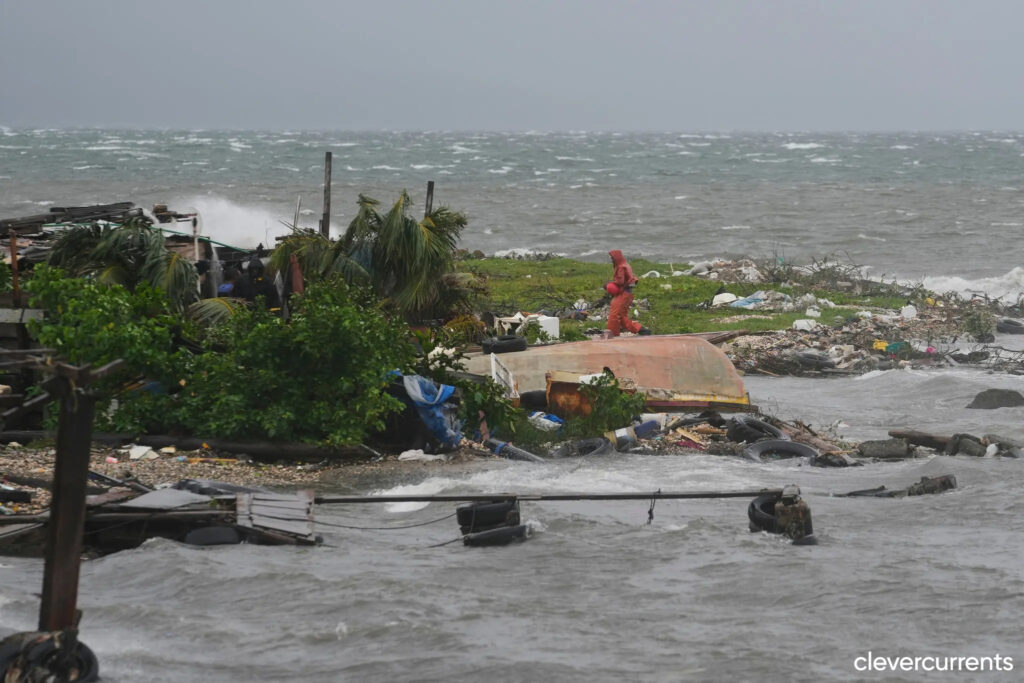On 28 October 2025, Hurricane Melissa made landfall in southwestern Jamaica as a catastrophic Category 5 storm — the strongest ever recorded to strike the island.
With sustained winds of about 185 mph (≈295 km/h) near landfall, the storm tied records for intensity and racked up tremendous damage in its wake.
This blog post takes a closer look at the death toll, the scale of devastation, how Jamaica is responding — and what this event means for climate resilience going forward.
The Human Cost – Deaths & Displacement
-
Officials in Jamaica confirmed three deaths during storm preparations. Most occurred while residents were cutting trees or securing property ahead of the storm.
-
Across the Caribbean, the broader death toll stands at seven confirmed fatalities (three in Jamaica, three in Haiti, one in the Dominican Republic) as of early reports.
-
Thousands have been displaced or forced into shelters. For example, more than 15,000 Jamaicans were reported in emergency facilities.
These figures are preliminary — given the level of destruction and access difficulties in many areas, the final tally could rise.
The Scale of Destruction
Infrastructure & Power
-
Over 500,000 households in Jamaica lost power.
-
Four hospitals sustained significant damage; one required evacuation of patients after a power loss.
-
Key roads, bridges and utility poles in parishes like St Elizabeth were compromised.
Homes, Agriculture & Tourism Sector
-
The storm impacted Jamaica’s southwest “breadbasket” (St Elizabeth parish), leaving large tracts of land under water.
-
In tourism-heavy areas such as Montego Bay, video footage revealed shattered airport terminals, collapsed ceilings, and flooded waiting areas.
Footage & Visuals
Videos circulated show uprooted trees, roofs torn away, intense flooding and debris strewn across streets. One meteorologist on-site described the home he was reporting from as “something out of a horror-movie”.
The Response: Jamaica Mobilises
-
The government declared the entire island a disaster area to unlock emergency powers and facilitate rapid relief.
-
Access to remote and rural communities is hindered by flooding, downed trees and collapsed infrastructure — delaying relief supplies.
-
Emergency shelters have been expanded, and focus is shifting to restoring power and critical services (hospitals, water-pumping stations).
What Comes Next? Risks & Recovery
-
The storm continues toward Cuba and the Bahamas, meaning Jamaica’s recovery phase overlaps with ongoing regional threats.
-
Longer-term agricultural losses, tourism revenue decline and reconstruction costs will weigh heavily on Jamaica’s economy.
-
More broadly, this event underscores how warming oceans and favourable conditions are enabling storms to intensify faster — a key climate change signal.
Key Takeaways
-
Record-breaking intensity: Hurricane Melissa struck Jamaica with unprecedented strength, amplifying the scale of destruction.
-
Infrastructure vulnerability: Hospitals, power grids, roads and agriculture all took severe blows — highlighting fragilities.
-
Early human toll: While the confirmed death toll is still in single digits for Jamaica, the disruption and damage are extensive and will have long-lasting effects.
-
Recovery will be slow: Rebuilding homes, restoring power and supporting agriculture will require sustained effort and investment.
-
Broader implications: Jamaica’s experience is a vivid example of how tropical cyclone risk is evolving — reinforcing the urgency of climate adaptation and resilient infrastructure.
Final Thoughts
For the people of Jamaica, this is a moment of immense challenge: homes damaged, lives upended, and communities scattered. Yet amid the devastation, the declaration of a disaster zone and the mobilisation of relief services offer a path forward.
As we watch the recovery unfold, we must remember: events like Hurricane Melissa aren’t isolated anomalies — they are increasingly part of a world where extreme weather is no longer rare but rising. The capacity to withstand, adapt and rebuild will define how nations weather the next storm.

